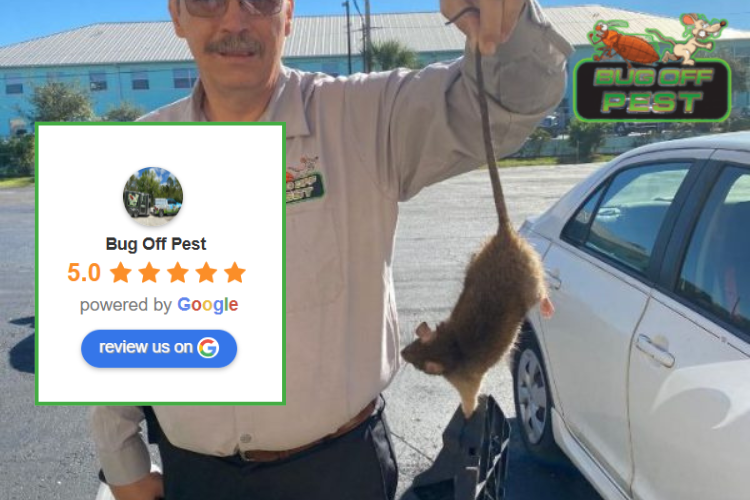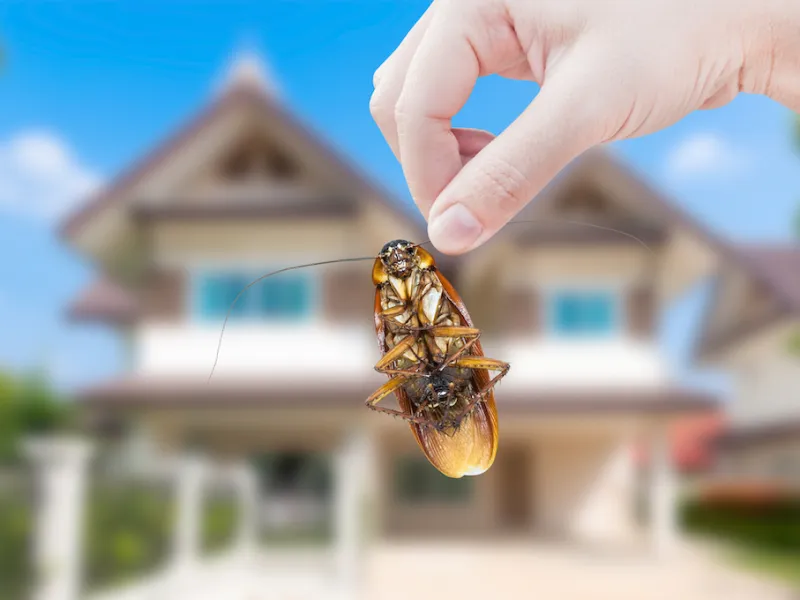How an Exterminator in Port Charlotte Can Defend Your Home from Pests
Discover the current Developments in Bug Control and How to Apply Efficient Treatment Solutions
In recent years, the field of insect control has actually experienced substantial developments, driven by the requirement for lasting and reliable treatment solutions. Innovative strategies such as Integrated Pest Monitoring (IPM) combine environmentally friendly practices with cutting-edge modern technology, improving both effectiveness and environmental duty.
Eco-Friendly Pest Control Options
Recently, the need for eco-friendly insect control alternatives has surged as property owners and organizations alike look for lasting choices to typical chemical treatments. This shift is driven by growing environmental understanding and a need to decrease the wellness risks related to synthetic pesticides.

Environment-friendly bug control techniques encompass a variety of approaches that focus on the use of all-natural materials and techniques. Integrated Bug Administration (IPM) is one such approach, incorporating organic, cultural, and mechanical tactics to handle bug populations while decreasing reliance on chemicals (Wildlife removal services). This holistic method stresses prevention through environment manipulation and the intro of all-natural predators, thus promoting a balanced ecosystem
Another prominent choice is making use of botanical chemicals derived from plants, which have a tendency to be less dangerous to non-target organisms. Products like neem oil and diatomaceous earth have actually gained traction for their performance in controlling bugs while posing very little threats to human health and the atmosphere.
In addition, exclusion strategies, such as sealing entrance factors and maintaining tidiness, play an important role in eco-friendly bug management. By adopting these sustainable methods, businesses and individuals can efficiently take care of pests while promoting a healthier planet for future generations.
Smart Innovation in Bug Monitoring
Innovation is reshaping the landscape of insect administration, with clever technology emerging as a critical force in enhancing efficiency and effectiveness - Wildlife removal services. The integration of Internet of Things (IoT) devices, expert system (AI), and data analytics is transforming how insect control specialists approach invasions
Smart traps outfitted with sensing units can spot insect activity in real-time, sending instant notifies to operators. This enables timely responses, minimizing damages and minimizing the requirement for considerable therapies. Furthermore, AI algorithms assess historic data to forecast bug habits, enabling aggressive interventions based upon ecological conditions and problem patterns.
Drones and automatic vehicles are likewise playing a considerable role in parasite administration, providing airborne assessments of large areas, recognizing hotspots, and even dispersing targeted treatments. These modern technologies not only simplify operations yet likewise boost safety by restricting human exposure to potentially hazardous chemicals.
In addition, mobile applications equip customers to keep track of parasite activity and gain access to specialist suggestions, promoting a joint technique to pest management. Generally, the fostering of smart innovation is establishing a brand-new standard in bug control, stressing data-driven decisions and sustainable methods that inevitably profit both professionals and house owners alike.
Integrated Bug Management Techniques
Integrated Bug Monitoring (IPM) utilizes an alternative strategy to pest control, combining different approaches to effectively handle parasite populaces while minimizing dangers to human health and the environment. IPM focuses on understanding the pest life process, their all-natural adversaries, and the community in which they thrive.
Among the basic components of IPM is checking pest populations through normal inspections and data collection. This enables for the recognition of bug limits, determining when treatment is required. Cultural techniques, such as plant rotation, environment, and sanitation manipulation, are necessary in minimizing insect prevalence and advertising plant health and wellness.
Mechanical controls, including barriers and catches, are likewise important in IPM. These methods can literally get rid of or discourage pests without the usage of chemicals. When essential, the wise application of chemical controls is used, concentrating on targeted therapies that minimize ecological influence.
Education and learning and collaboration among stakeholders, consisting of farmers, pest control professionals, and the community, are vital for the successful implementation of IPM methods. By prioritizing sustainable techniques, IPM not only addresses pest problems yet likewise cultivates a healthier environment.
Biological Control Methods
Many organic control methods are progressively recognized for their efficiency in taking care of insect populaces while advertising ecological balance. These methods harness all-natural predators, parasites, and microorganisms to minimize pest numbers without relying upon synthetic chemicals. The intro of ladybugs can properly control aphid populaces, while nematodes target soil-dwelling pest larvae.
Additionally, making use of microbial chemicals, such as Bacillus thuringiensis (Bt), provides an ecologically pleasant alternative for handling caterpillar pests. These products particularly target pest species, decreasing injury to valuable bugs and pollinators. Preservation biological control emphasizes boosting habitats for natural enemies, such as birds and advantageous insects, therefore encouraging their presence in agricultural systems.
Research remains to disclose ingenious methods within this field, such as making use of pheromones to interrupt pest mating patterns or the growth of biocontrol representatives with genetic modification. Applying these approaches can cause sustainable pest monitoring methods that reduce the reliance on chemical treatments, inevitably promoting healthier communities. As understanding of these techniques grows, they are coming to be essential elements of integrated bug management (IPM) approaches, providing an equilibrium between efficient pest control and ecological stewardship.
DIY Insect Control Solutions
As property owners look for effective means to tackle parasite problems, do it yourself index insect control remedies have obtained popularity for their accessibility and cost-effectiveness. These techniques encourage people to deal with problems using easily offered materials and methods, often without the requirement for specialist intervention.

In addition, keeping correct hygiene and regular evaluations can avoid insect entry and nesting (Wildlife removal services). Easy practices, such as securing splits, eliminating food sources, and decluttering, can dramatically decrease pest populaces. Catches, both homemade and commercially available, can also supply efficient services for monitoring and regulating certain insects like bugs or rats

Final Thought
The integration of green insect control alternatives, smart modern technology, and ingenious management methods presents a comprehensive technique to reliable informative post pest administration. By welcoming Integrated Pest Management (IPM) and using organic control methods, alongside DIY options, lasting and liable pest control can be accomplished. These advancements not only enhance the effectiveness of bug monitoring techniques yet additionally add to a healthier environment. Implementing these techniques promotes a balanced community while successfully attending to pest populaces.
Environment-friendly insect control approaches include a range of strategies that focus on the use of all-natural compounds and practices. Integrated Parasite Administration (IPM) is one such approach, incorporating biological, social, and mechanical strategies to manage parasite populations while decreasing dependence on chemicals. As understanding of these techniques grows, they are becoming indispensable elements of incorporated bug management (IPM) check this site out methods, providing an equilibrium between reliable pest control and ecological stewardship.
The integration of green insect control alternatives, wise technology, and ingenious management approaches provides an extensive strategy to effective parasite administration. By accepting Integrated Pest Management (IPM) and making use of organic control methods, together with Do it yourself remedies, liable and lasting pest control can be achieved.